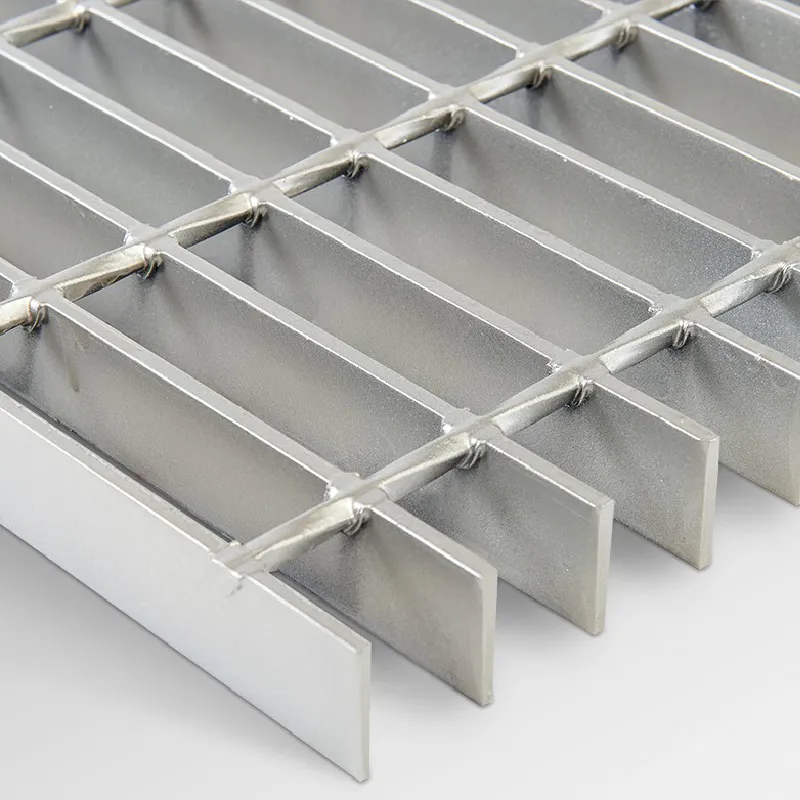- Industrial zone, South of Anping Town, Hengshui, Hebei, China.
- sales@hfpetromesh.com
- +86-18931809706
Durable Aluminum Grating Solutions for Various Industrial Applications and Outdoor Use
Aluminum Grating An Ingenious Solution for Modern Applications
In the realm of industrial and architectural design, aluminum grating has emerged as a versatile and practical solution for various applications. This lightweight yet robust material offers a unique blend of strength, durability, and aesthetic appeal, making it an excellent choice for numerous environments.
Aluminum grating is fabricated through a process of welding or extrusion, creating a series of interlocking bars. These bars can vary in spacing and thickness, allowing for customization based on specific needs. The primary advantage of aluminum as a material lies in its resistance to corrosion and rust, which is particularly beneficial in environments exposed to moisture or chemicals. Unlike traditional steel grating, aluminum does not require extensive maintenance, making it ideal for outdoor applications and harsh industrial settings.
One of the most common applications for aluminum grating is in the construction of walkways, platforms, and staircases. These structures must support weight while allowing for airflow and drainage, an area where aluminum grating excels. Its open design provides a lightweight solution that reduces the overall load on supporting structures, enhancing stability and safety. Moreover, the non-slip surface of aluminum grating ensures secure footing in wet or slippery conditions, making it especially useful in environments such as factories, processing plants, and water treatment facilities.
In addition to safety and functionality, aluminum grating offers aesthetic advantages as well. Available in various finishes, including mill, painted, and anodized options, it can complement a wide range of architectural styles. This makes aluminum grating an attractive choice for pedestrian walkways, balconies, and commercial buildings. Designers can use it to create visually appealing features while still prioritizing safety and efficiency.
Another important attribute of aluminum grating is its lightweight nature, which simplifies installation
. Unlike heavier materials such as steel or concrete, aluminum grating can be handled and installed with minimal manpower and equipment. This not only speeds up project timelines but also reduces labor costs. Furthermore, its high strength-to-weight ratio means that less material is needed to achieve the same structural integrity, resulting in cost savings and less environmental impact.aluminum grating

Aluminum grating is also highly versatile, with applications extending beyond just walkways and platforms. It is widely used in the automotive and aerospace industries for components and frameworks due to its lightweight properties and resistance to wear. Additionally, manufacturers of electronic equipment prefer aluminum grating for ventilation and heat dissipation in machinery and electrical enclosures.
In recent years, the focus on sustainability has propelled the use of aluminum grating further into the limelight. Aluminum is infinitely recyclable without losing its properties, making it a sustainable choice for environmentally-conscious projects. Choosing aluminum grating helps reduce the overall carbon footprint of construction and manufacturing processes, aligning with today’s emphasis on green building practices.
Furthermore, the implementation of aluminum grating can lead to energy savings. In certain applications, the open structure allows for natural light to penetrate, reducing the need for artificial lighting during the day. Additionally, its heat-resistant properties can help maintain cooler temperatures in buildings, thus lowering air conditioning demands.
As we look toward the future, the demand for aluminum grating is expected to rise as industries continue to innovate and explore new applications. From enhancing safety in industrial environments to providing aesthetically pleasing solutions in urban design, aluminum grating stands out as a multifaceted solution. Its combination of durability, maintenance-free characteristics, and sustainability positions it as a go-to material that satisfies the needs of modern applications.
In conclusion, aluminum grating is not just an industrial product; it is an adaptable and forward-thinking solution that exhibits the best qualities of modern material science. Whether you’re designing a commercial structure, improving safety in an industrial site, or seeking sustainable options for your next project, aluminum grating offers a wealth of benefits that make it a valuable choice in today’s world.
-
The Power of Pyramid Shaker Screen - A 3-Dimensional SolutionNewsOct.24,2024
-
Exploring the Versatility and Durability of Steel GratingNewsOct.24,2024
-
Revolutionizing Drilling Efficiency with Steel Frame Shaker Screens for Mud Shale ShakersNewsOct.24,2024
-
Potential of Shale Shaker ScreensNewsOct.24,2024
-
Offshore Pipeline Counterweight Welded Mesh - Reinforced Mesh in Marine EngineeringNewsOct.24,2024
-
Revolutionizing Offshore Pipeline Stability with Concrete Weight Coating MeshNewsOct.24,2024
